
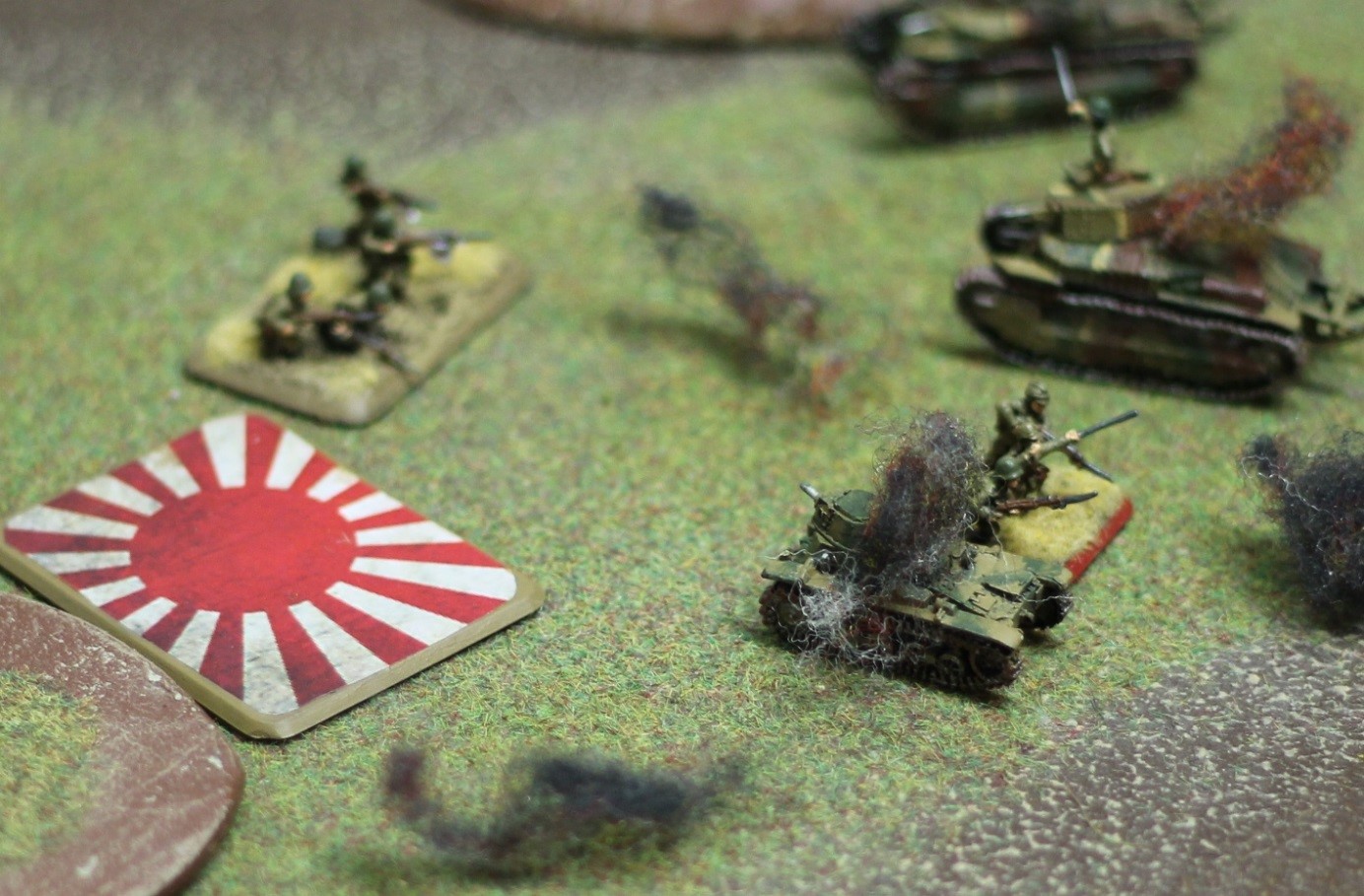
This article, the last in a series of three, is an after-action report on a wargame based on the battle of Nanjing in 1937. The report is written by G. Jökull Gíslason, an Iceland-based wargamer and historian with a special interest in the Second Sino-Japanese War. It shows how wargames and simulations can add an extra dimension to the study of past events.
TURN 6 – IJA
The tanks manage to close in on the Chinese infantry and cause some damage coming in with their machine guns and then go on to the assault with no effect. Using the rule “We must die, so let us die bravely” the Chinese player nominates two infantry teams to make a suicide attack with a higher Tank Assault rating. This way they manage to take out two of the opposing tanks. The remaining Japanese tank continues the fight but fails to score any hits and one more Chinese team makes the ultimate sacrifice and destroys the remaining tank.
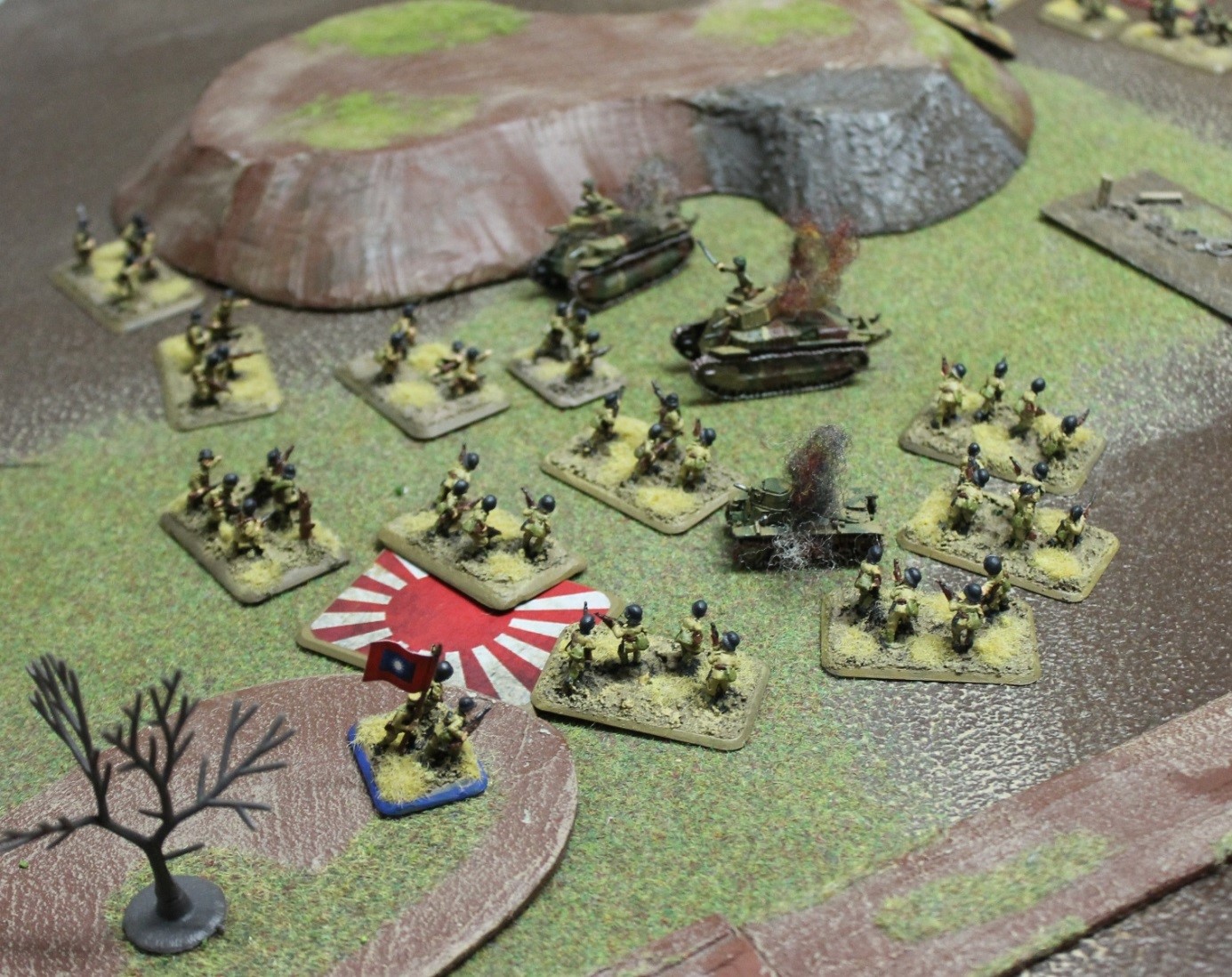
Three of the Chinese teams sacrifice themselves to destroy the Japanese tanks.
TURN 6 – NRA
Realising that the Japanese force is now already under half strength then there is little more to do against the last gun teams as the battle will be decided on the far objective. So the Chinese Company that attacked from the trenches moves at the double towards the action. Chinese fire is ineffective, mostly due to the lack of visible targets.
TURN 7 – IJA
The Imperial Japanese Army starts the turn by failing their Company Morale. But that only makes them more dangerous as they invoke the “No Surrender” rule. Now they advance both in the movement and shooting steps and all of a sudden a fully intact infantry platoon descends on the hapless Chinese company defending the far objective. Defensive fire fails to pin the assault and the Japanese charge into the Chinese. After a few rounds of close combat the Chinese retreat with only 4 teams and their banner bearer. The company had started at 19 teams and banner bearer when it arrived from the reserve. They remain in the field and contest the objective, for now.
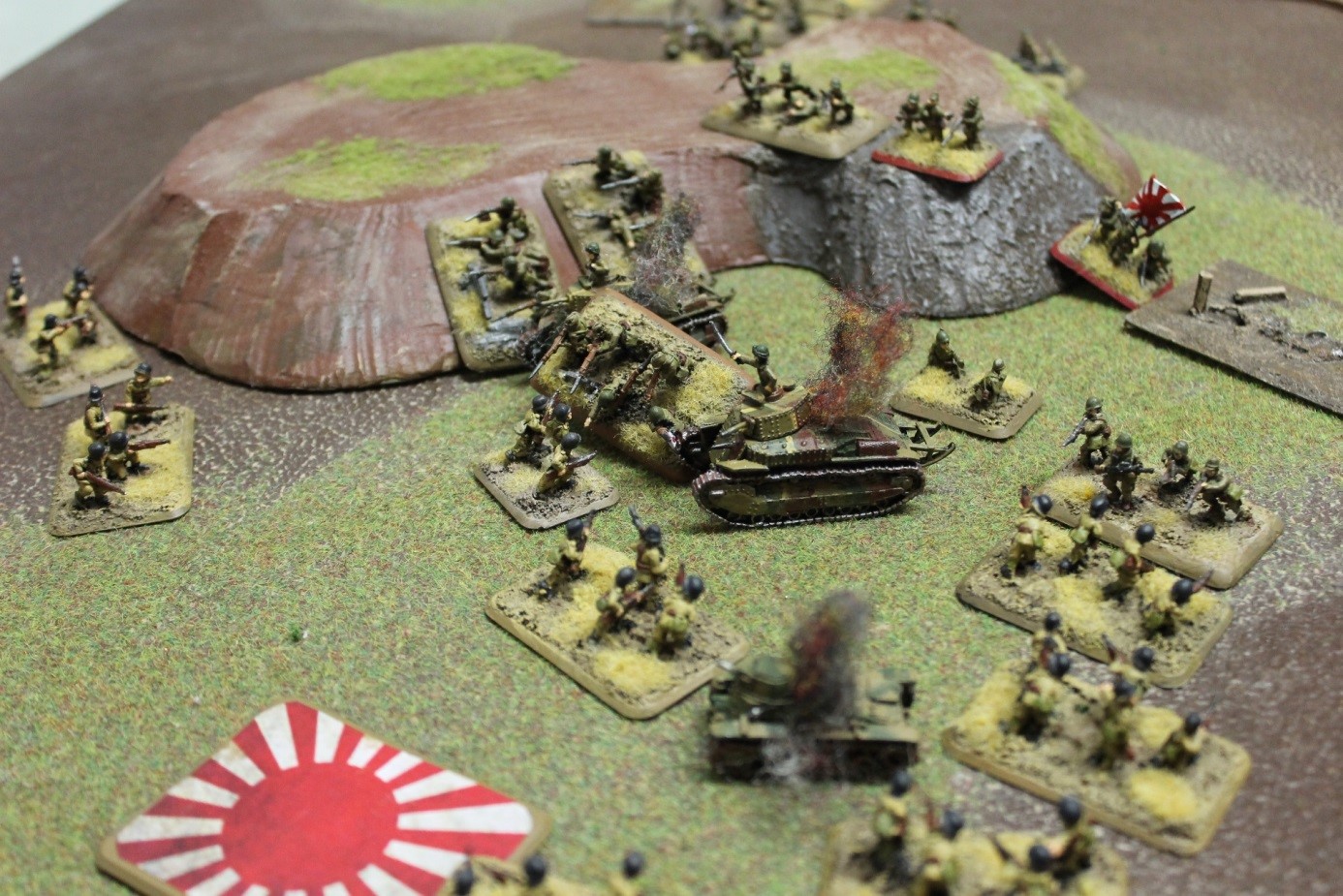
The Japanese advance rapidly after they fail company morale under the No Surrender rule.
TURN 8 – NRA
The Chinese continue to move at the double and now desperately bring all their firepower to bear on the Japanese but fail to do enough damage.
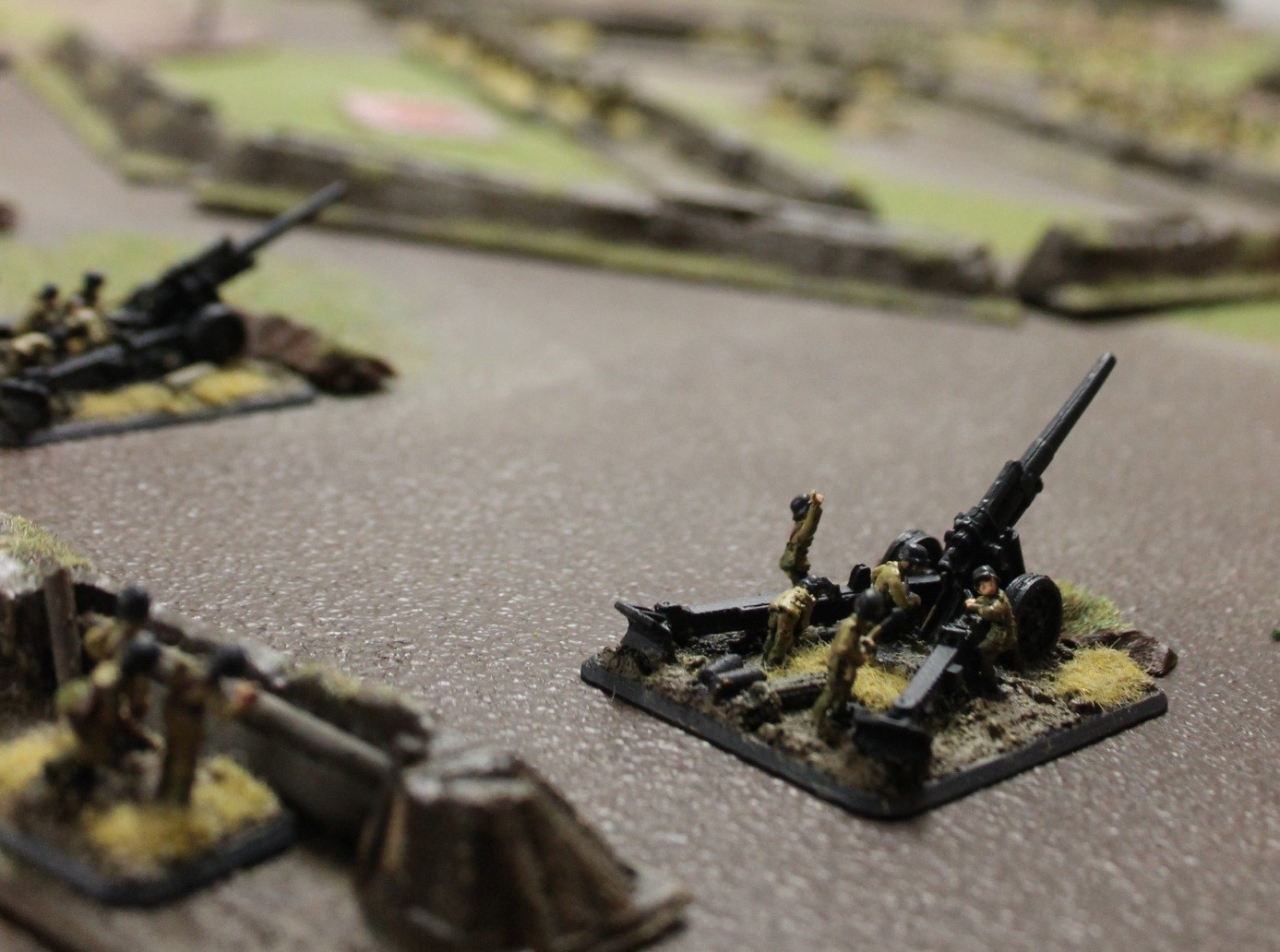
Chinese artillery attempts to destroy the Japanese but fail to do enough.
TURN 9 – IJA
The Japanese move against the last defenders and in an Epic battle the two standard bearers meet. The Japanese mercilessly cut down the remaining Chinese.
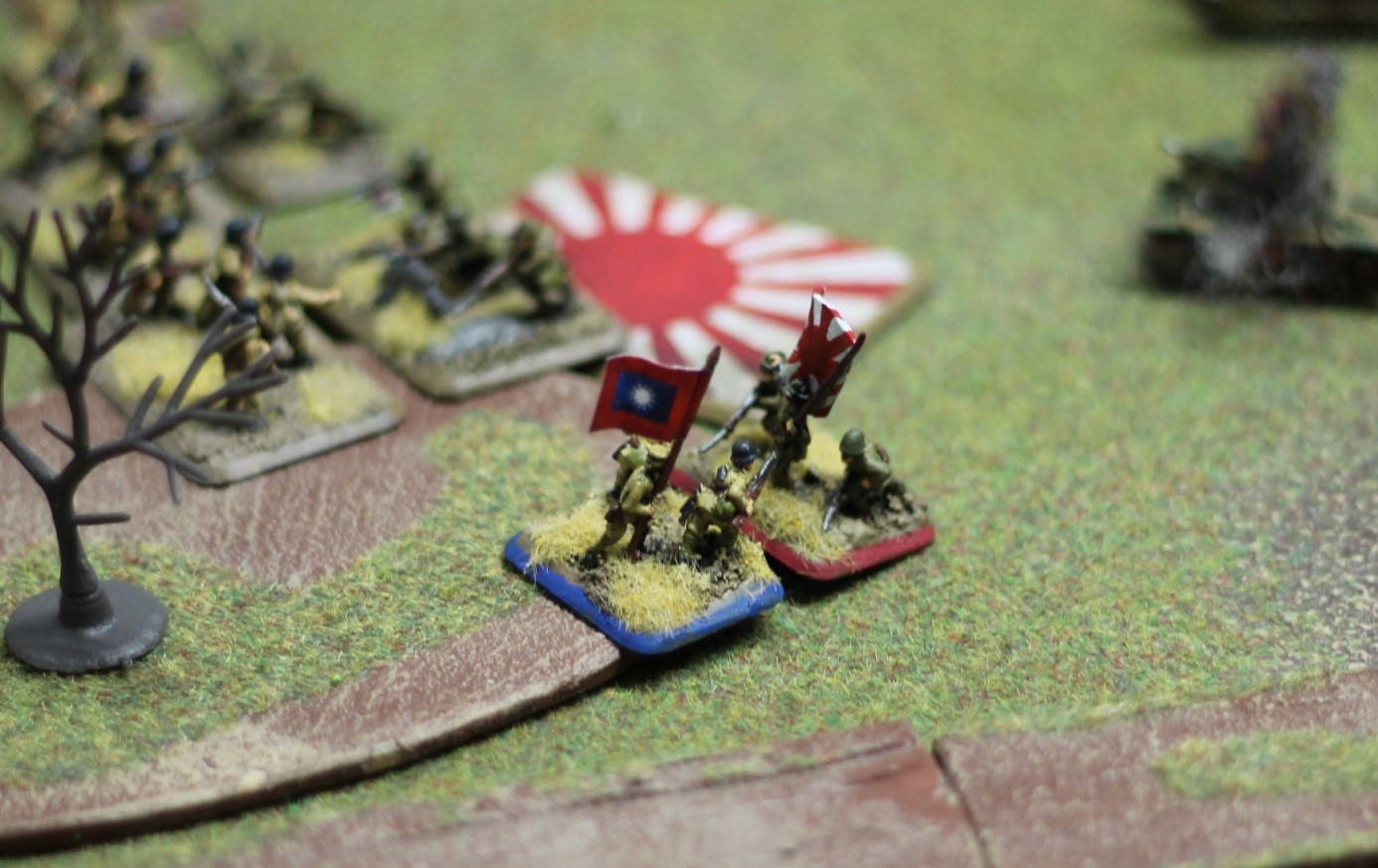
The Japanese mercilessly cut down the remaining Chinese around the objective.
TURN 9 – NRA
Just when the battle seems lost the Chinese realise that they are just within charging distance to the decimated Japanese infantry platoon that stands between them and their objective. So they charge with part of their remaining infantry company, destroy the Japanese and at the end of the assault step they barely manage to get a team close enough to contest the objective!
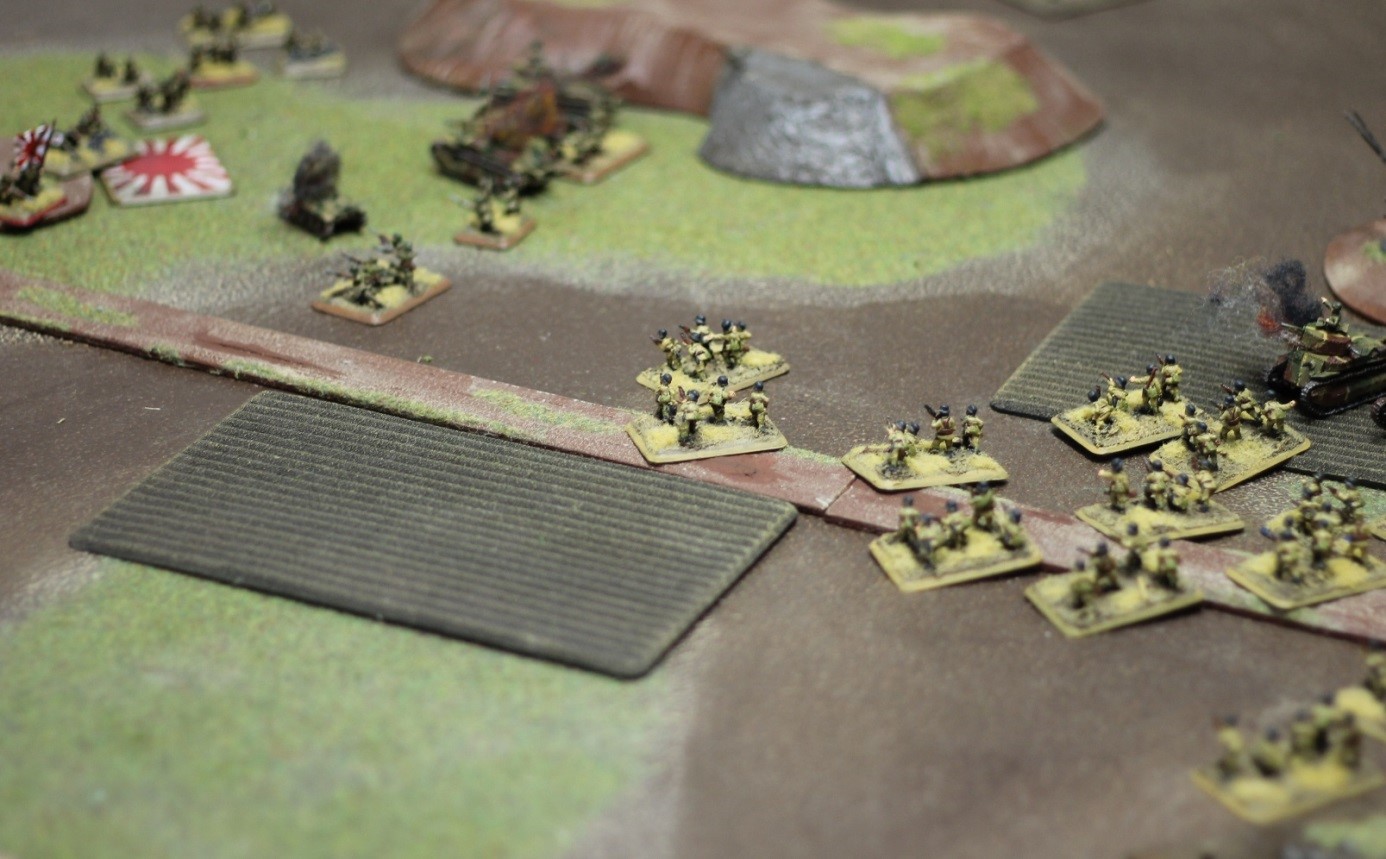
The Chinese are just able to get a few teams into assault against the decimated Japanese infantry and manage to stay in the game!
TURN 10 – IJA
The Japanese now turn to the new threat and send in their last teams to drive them away. They manage to assault and with 3 sword teams quickly eliminate the Chinese. Then they consolidate onto the objective.
TURN 10 – NRA
The Chinese have no teams close enough to get into assault or contest the objective this turn, so their only option is to destroy every last Japanese team. The Japanese have 5 teams remaining but these are well spread out. The Chinese fire all their weapons into the platoon and manage to take out the terrible Regimental Standard but after having fired every last weapon the Japanese Company commander and one rifle team remain.
TURN 11 – IJA
Even though they only have two teams remaining the Japanese are in full possession of the objective and win the game 4-3
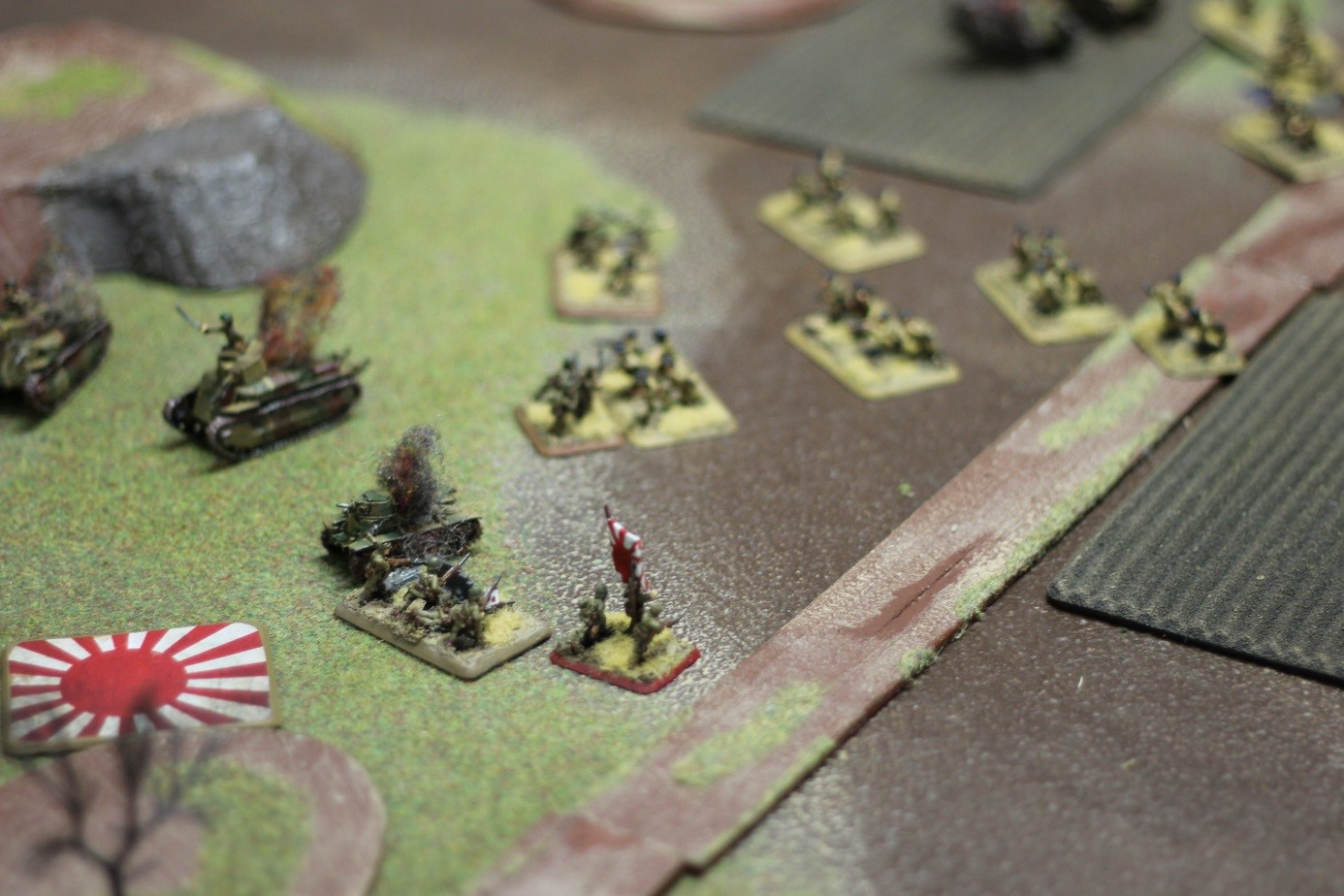
CONCLUSION
Jökull
What a game! It was a first in many regards. It was the first game I play with both forces fully assembled. I liked how the Chinese turned out and feel they are a good match against the Japanese and possibly other forces. I have also been working on lists for the 200 Division and the more regular Chinese forces (including a Dare to Die Company).
But the Japanese are really really hard to win. With the Regimental Standard makes them pass all platoon motivation tests, then the tanks fight to the end, the platoons fight on with Seishin and worst of all the No Surrender actually made the Japanese more dangerous after they failed their Company Morale.
Half way through the game I was almost expecting a 6-1 win but seeing the Japanese in action like this I think they might actually have pulled off an frontal assault against the strongpoint.
Brjánn
This was an interesting and tense fight. It did look like the Japanese were done before they even started. I should take the blame for that. I should not have sent one tank platoon against the HMG nest and then the PaKs. If I had sent both tank platoons at them then it would have been different and then the Japanese would have dominated the game with their armour. Still I can’t complain. As for the Japanese they are really tough. Maybe too much so. I have never played an army that simply cannot be killed before. I was down to 2 teams but that was enough for the win. Poor Jökull had destroyed 42 teams out of 44, but he was 2 teams short of Victory.
Over all I think the Japanese and Chinese are interesting forces and can make up for very good battles.

Jökull and Peter shake hands after a battle well fought!
Peter’s two books, I recommend them both:
